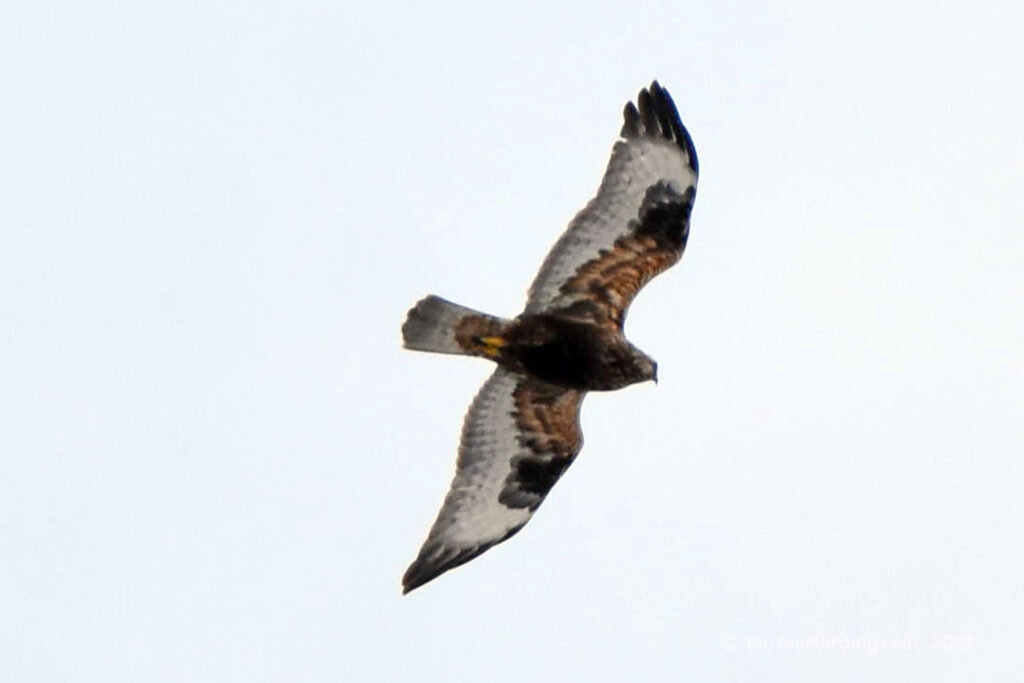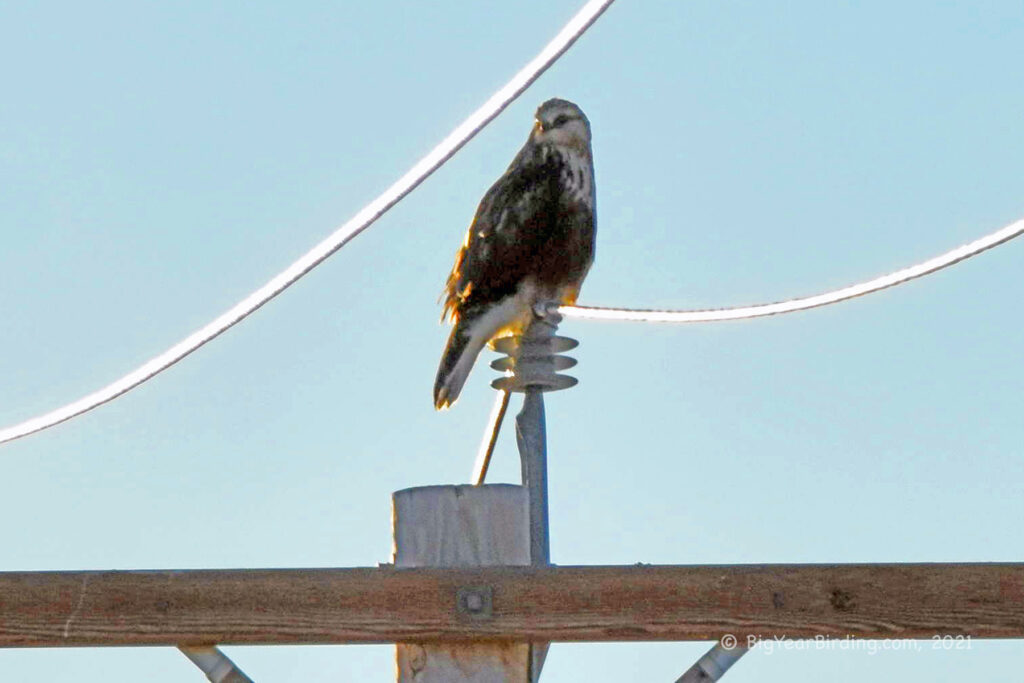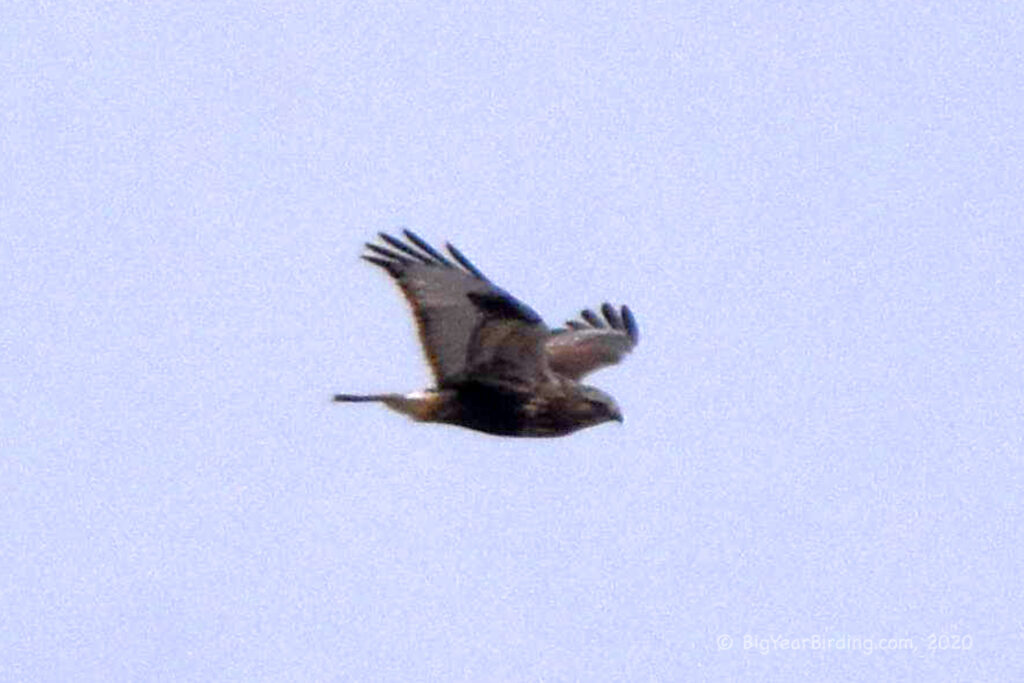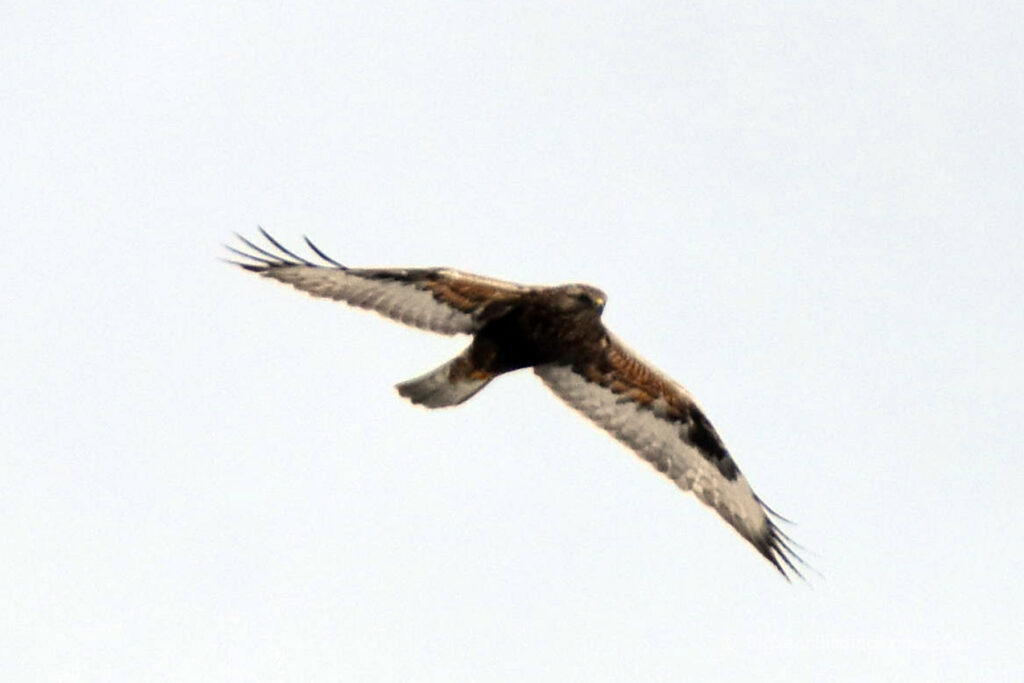
The Rough-legged Hawk (Buteo lagopus) is a large bird of prey that breeds in the Arctic tundra and winters in more temperate areas. Adults typically measure between 18-24 inches in length and have a wingspan of 52-56 inches. They have a distinctive feathered facial disk and heavily feathered legs, which provide insulation in cold climates.

One of the most distinguishing field marks of the Rough-legged Hawk is their plumage. Adults have dark brown feathers on their back and wings, with a white head, neck, and breast. The underside of their wings is also white with a dark trailing edge, while their tail is banded with black and white. Juvenile birds have a similar pattern but are more mottled in appearance.
During migration, Rough-legged Hawks can be seen in large numbers as they move from their breeding grounds in the Arctic to their wintering areas in southern Canada and the northern United States. They are typically migratory, although some individuals may remain in their breeding or wintering areas year-round.
Rough-legged Hawks primarily hunt small mammals, such as voles and lemmings, which make up the bulk of their diet. They hunt by soaring and hovering over open areas, scanning the ground below for prey. Once they spot a potential meal, they swoop down and capture it with their sharp talons.

The Rough-legged Hawk is a magnificent bird that is well adapted to life in the Arctic tundra. Its distinctive plumage and impressive hunting skills make it a favorite among birdwatchers and nature enthusiasts. However, like many birds of prey, the Rough-legged Hawk faces threats from habitat loss, pesticide use, and other human activities. Conservation efforts are critical to ensure the survival of this species for future generations to enjoy.

